The Mikoyan MiG-31 [Foxhound]
Advertisements:
[The Mikoyan MiG-31 (Russian: Микоян МиГ-31; NATO reporting name: Foxhound) is a supersonic interceptor aircraft developed to replace the MiG-25 [Foxbat]. The MiG-31 was designed by the Mikoyan design bureau based on the MiG-25.
The wings and airframe of the MiG-31 are stronger than those of the MiG-25, permitting supersonic flight at low altitudes. Its Aviadvigatel D30-F6 turbofans, rated at 152 kN thrust, allow a maximum speed of Mach 1.23 at low altitude. High-altitude speed is temperature-redlined to Mach 2.83 – the thrust-to-drag ratio is sufficient for speeds in excess of Mach 3, but such speeds pose unacceptable hazards to engine and airframe life in routine use.
Given the MiG-31's role as Mach 2.8+ interceptor and the sustained afterburning this requires, its fuel consumption is higher when compared to other aircraft serving in different roles, such as the Su-27. Consequently, the aircraft's fuel fraction has been increased to more than 0.40–16,350 kg (36,050 lb) of high-density T-6 jet fuel. The outer wing pylons are also plumbed for drop tanks, allowing an extra 5,000 L (1,320 US gal) of external fuel. Late-production aircraft have aerial refueling probes.
MiG-31 is limited to only 5 g at supersonic speeds. At combat weight, its wing loading is marginal and its thrust to weight ratio is favorable. However, it is not designed for close combat or rapid turning.
The MiG-31's main armament is four R-33 air-to-air missiles (NATO codename AA-9 [Amos]) carried under the belly. The R-33 is the Russian equivalent of the U.S. Navy's AIM-54 Phoenix. It can be guided in semi-active radar homing (SARH) mode, or launched in inertial guidance mode with the option of mid-course updates from the launch aircraft and switching to SARH for terminal guidance. A more advanced version of the weapon, the Vympel R-37, which is the replacement for the older R-33, features folding stabilizers to reduce its stored size.
Other weapons include the old AA-6 [Acrid], originally deployed on the MiG-25, and the Molniya R-60 or Vympel R-73 short-range IR missiles, carried on wing pylons. Currently the entire MiG-31 fleet is being refitted to carry the newer Vympel R-77 on the wing pylons.
Unlike the MiG-25, the MiG-31 has an internal cannon, a six-barrel, 23 mm GSh-6-23 with 800 rounds of ammunition, mounted above the starboard main landing gear bay. The GSh-6-23 has a claimed rate of fire of over 10,000 rounds per minute. However, after two Su-24 were lost because of premature shell detonation in 1983, plus some different problems with gun usage (system failures, etc.), usage of the GSh-6-23 was stopped by a decision of the Soviet AF Command. The aircraft in the Russian AF were flying with fully operational guns, but without ammunition in January 2009.
The MiG-31 entered operational service with the Soviet Anti-Air Defense (PVO) in 1982. It was first photographed by a Norwegian pilot over the Barents Sea in 1985. The MiG-31 was sought after for a variety of long-range missions.
With the designation Ye-266, a re-engined Ye-155 shattered world records. It reached an absolute maximum altitude of 123,524 ft, or 37,650 m, and set a time to height record of 35,000 m in 4 minutes, 11.78 seconds, both which were set by test pilot Alexander Fedotov. Ostapenko, his deputy, set a record of 30,000 m in 3 minutes, 9.8 seconds.
Following the collapse of the USSR in 1991, however, the budget for spares (MIG-31 AOG desk was created to solve this problem) and maintenance collapsed, leaving many squadrons unable to maintain their complex aircraft. By 1996, only 20% of remaining aircraft were reportedly serviceable at any time; however, by early 2006, a stronger Russian economy permitted the return to service of around 75% of the Russian Air Force's (VVS') MiG-31s.
Approximately 370 are in Russian service, with another 30 or so in Kazakhstan. The MiG-31 will likely continue serving for years to come, depending on upgrades and future growth of the Russian economy]. – Wikipedia
Photos: The Mikoyan MiG-31 [Foxhound]. Russia, April 2012. (Photo by Alexandr Pak; Source: LiveJournal)
The wings and airframe of the MiG-31 are stronger than those of the MiG-25, permitting supersonic flight at low altitudes. Its Aviadvigatel D30-F6 turbofans, rated at 152 kN thrust, allow a maximum speed of Mach 1.23 at low altitude. High-altitude speed is temperature-redlined to Mach 2.83 – the thrust-to-drag ratio is sufficient for speeds in excess of Mach 3, but such speeds pose unacceptable hazards to engine and airframe life in routine use.
Given the MiG-31's role as Mach 2.8+ interceptor and the sustained afterburning this requires, its fuel consumption is higher when compared to other aircraft serving in different roles, such as the Su-27. Consequently, the aircraft's fuel fraction has been increased to more than 0.40–16,350 kg (36,050 lb) of high-density T-6 jet fuel. The outer wing pylons are also plumbed for drop tanks, allowing an extra 5,000 L (1,320 US gal) of external fuel. Late-production aircraft have aerial refueling probes.
MiG-31 is limited to only 5 g at supersonic speeds. At combat weight, its wing loading is marginal and its thrust to weight ratio is favorable. However, it is not designed for close combat or rapid turning.
The MiG-31's main armament is four R-33 air-to-air missiles (NATO codename AA-9 [Amos]) carried under the belly. The R-33 is the Russian equivalent of the U.S. Navy's AIM-54 Phoenix. It can be guided in semi-active radar homing (SARH) mode, or launched in inertial guidance mode with the option of mid-course updates from the launch aircraft and switching to SARH for terminal guidance. A more advanced version of the weapon, the Vympel R-37, which is the replacement for the older R-33, features folding stabilizers to reduce its stored size.
Other weapons include the old AA-6 [Acrid], originally deployed on the MiG-25, and the Molniya R-60 or Vympel R-73 short-range IR missiles, carried on wing pylons. Currently the entire MiG-31 fleet is being refitted to carry the newer Vympel R-77 on the wing pylons.
Unlike the MiG-25, the MiG-31 has an internal cannon, a six-barrel, 23 mm GSh-6-23 with 800 rounds of ammunition, mounted above the starboard main landing gear bay. The GSh-6-23 has a claimed rate of fire of over 10,000 rounds per minute. However, after two Su-24 were lost because of premature shell detonation in 1983, plus some different problems with gun usage (system failures, etc.), usage of the GSh-6-23 was stopped by a decision of the Soviet AF Command. The aircraft in the Russian AF were flying with fully operational guns, but without ammunition in January 2009.
The MiG-31 entered operational service with the Soviet Anti-Air Defense (PVO) in 1982. It was first photographed by a Norwegian pilot over the Barents Sea in 1985. The MiG-31 was sought after for a variety of long-range missions.
With the designation Ye-266, a re-engined Ye-155 shattered world records. It reached an absolute maximum altitude of 123,524 ft, or 37,650 m, and set a time to height record of 35,000 m in 4 minutes, 11.78 seconds, both which were set by test pilot Alexander Fedotov. Ostapenko, his deputy, set a record of 30,000 m in 3 minutes, 9.8 seconds.
Following the collapse of the USSR in 1991, however, the budget for spares (MIG-31 AOG desk was created to solve this problem) and maintenance collapsed, leaving many squadrons unable to maintain their complex aircraft. By 1996, only 20% of remaining aircraft were reportedly serviceable at any time; however, by early 2006, a stronger Russian economy permitted the return to service of around 75% of the Russian Air Force's (VVS') MiG-31s.
Approximately 370 are in Russian service, with another 30 or so in Kazakhstan. The MiG-31 will likely continue serving for years to come, depending on upgrades and future growth of the Russian economy]. – Wikipedia
Photos: The Mikoyan MiG-31 [Foxhound]. Russia, April 2012. (Photo by Alexandr Pak; Source: LiveJournal)
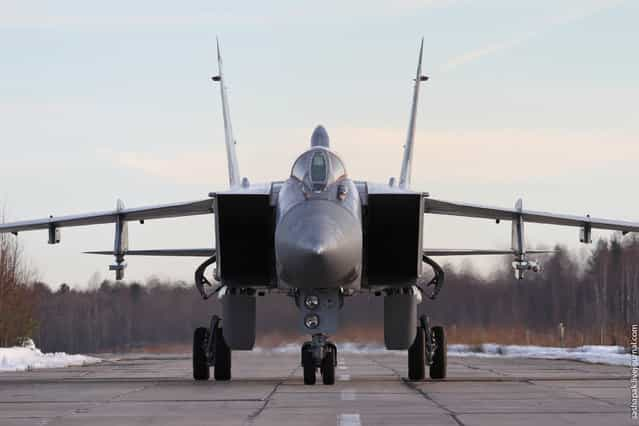
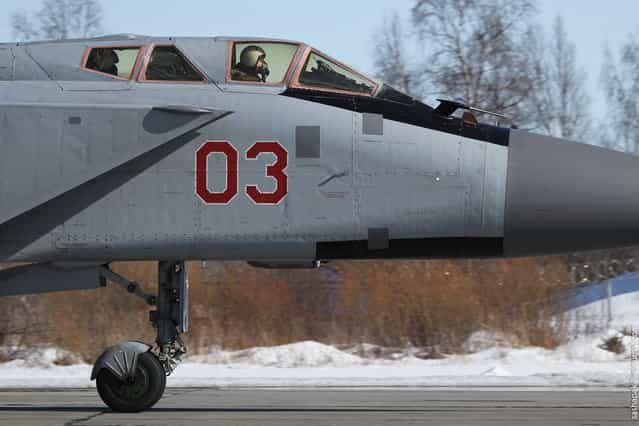
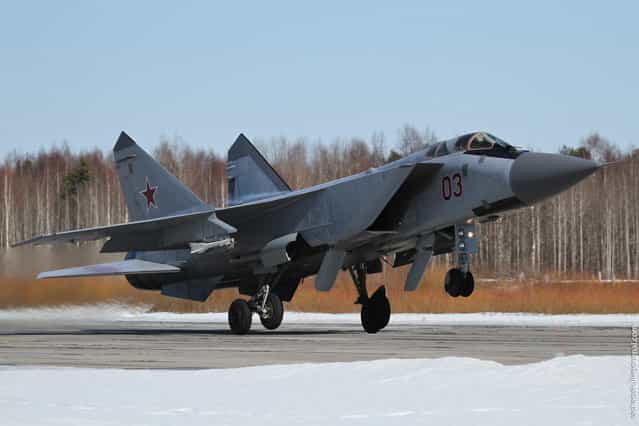
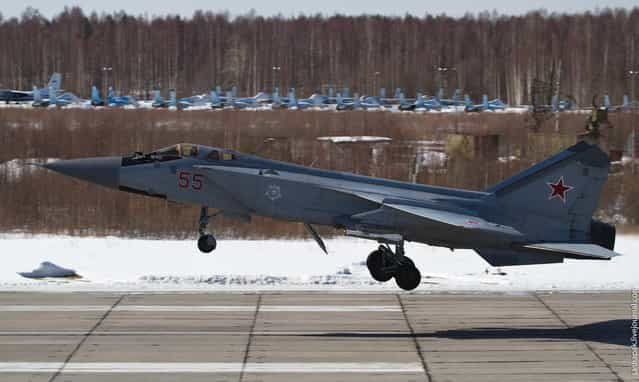
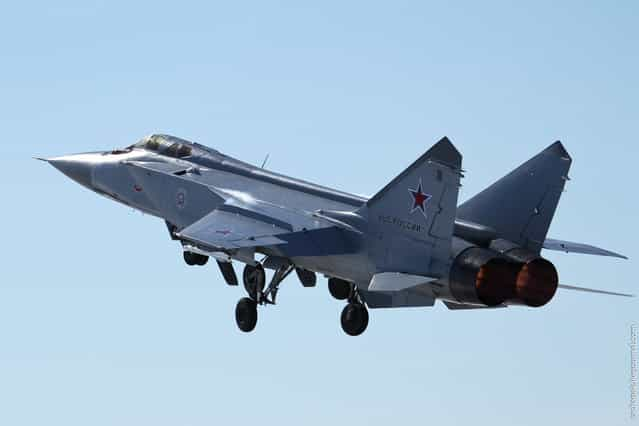
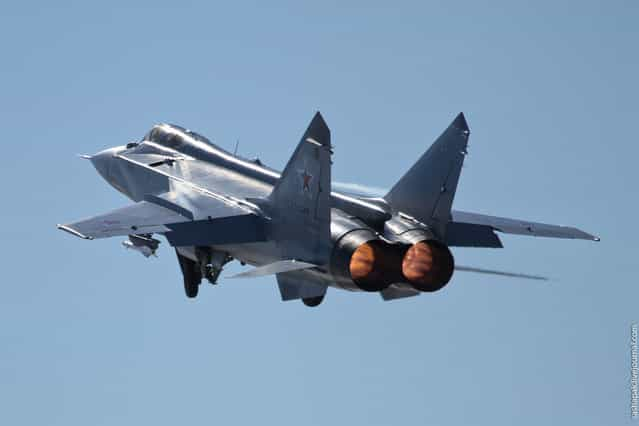
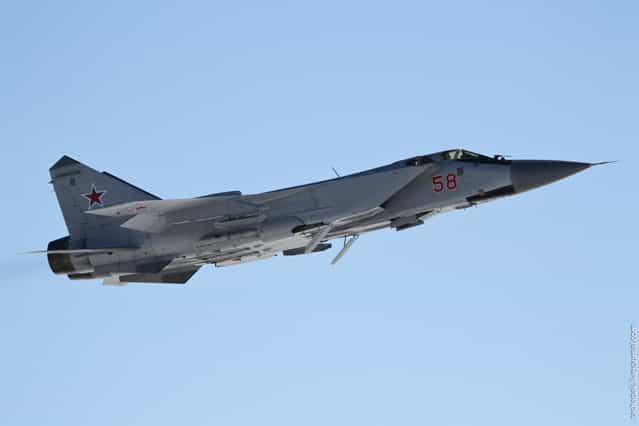



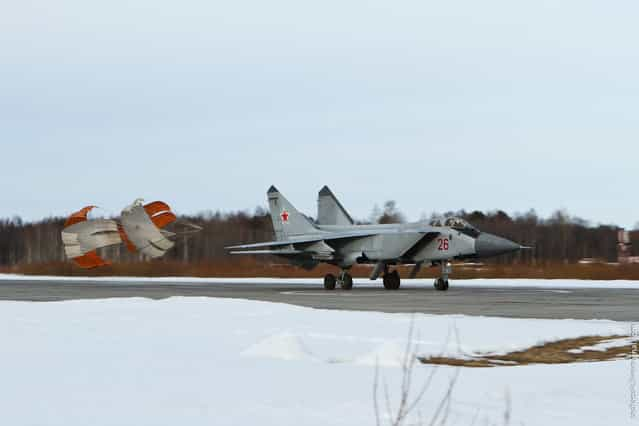
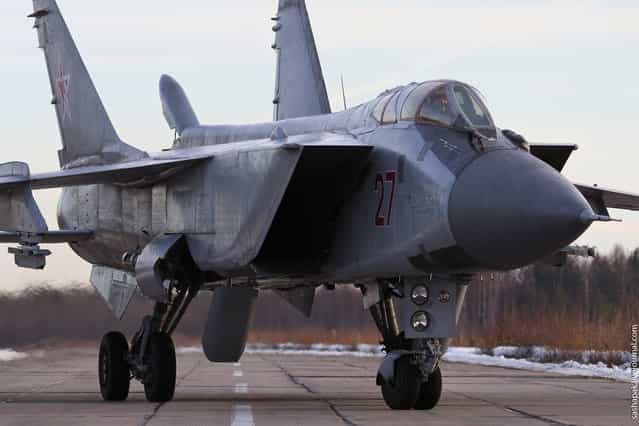
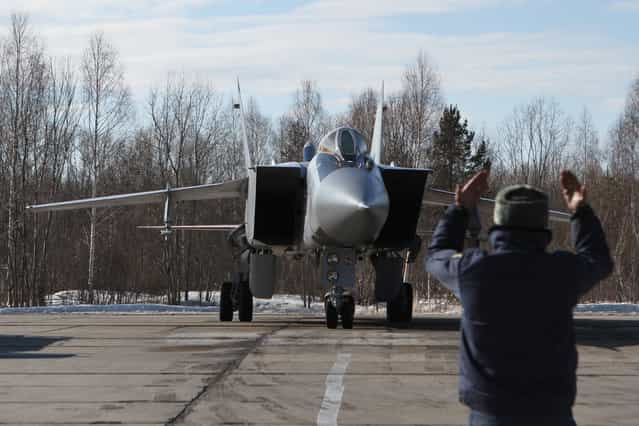
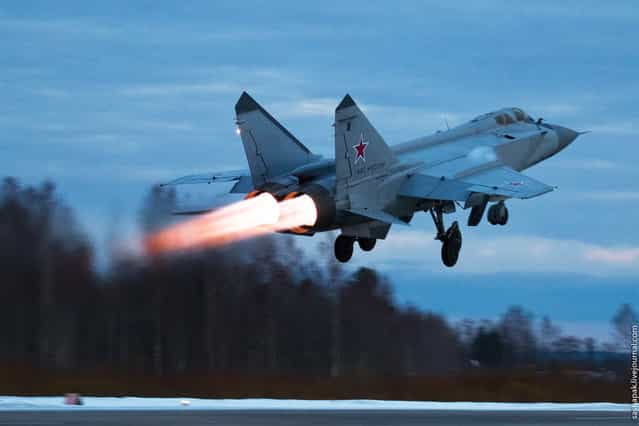
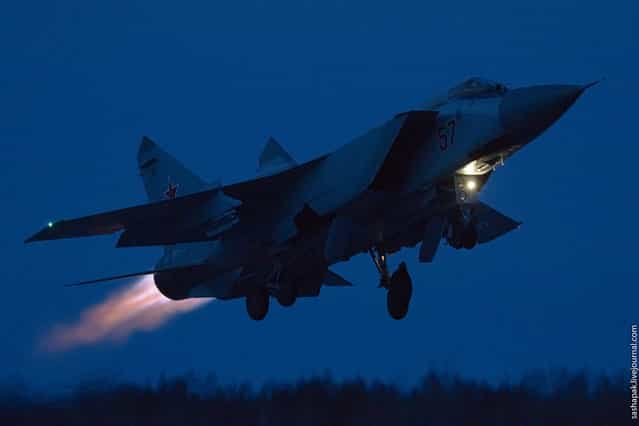
![Test of the [Pantsir-S1] Test of the [Pantsir-S1]](http://img.gagdaily.com/uploads/posts/fact/2013/short/0000a0cf_medium.jpg)
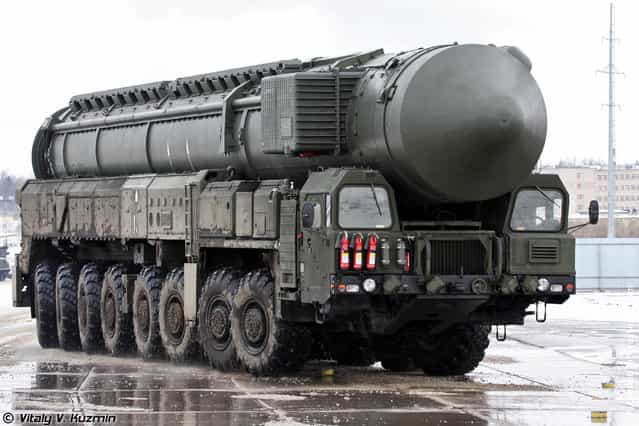
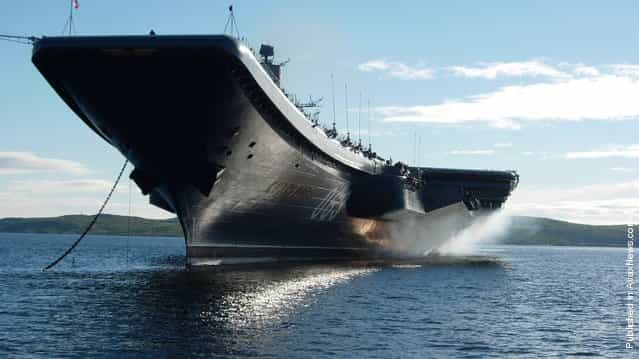

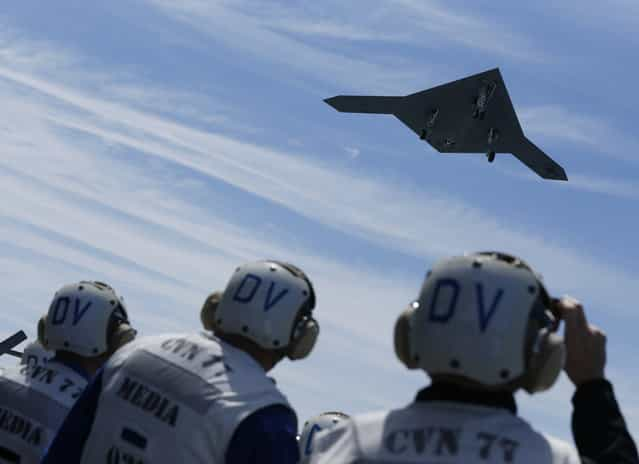
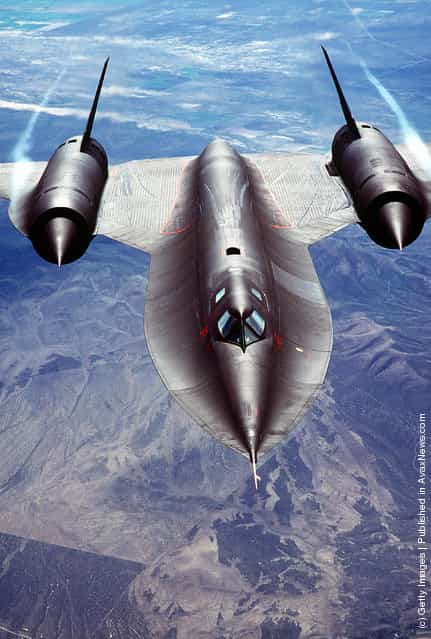
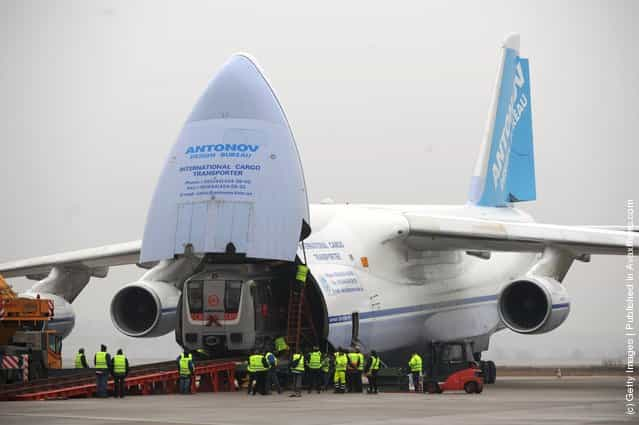
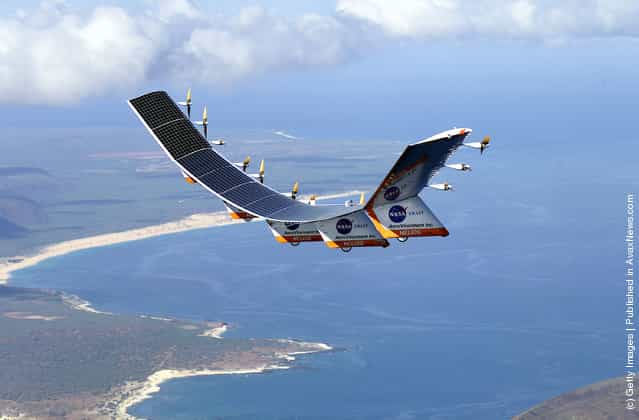

![Rare [Hybrid] Total Solar Eclipse Rare [Hybrid] Total Solar Eclipse](http://img.gagdaily.com/uploads/posts/fact/2013/short/00010c55_medium.jpg)






